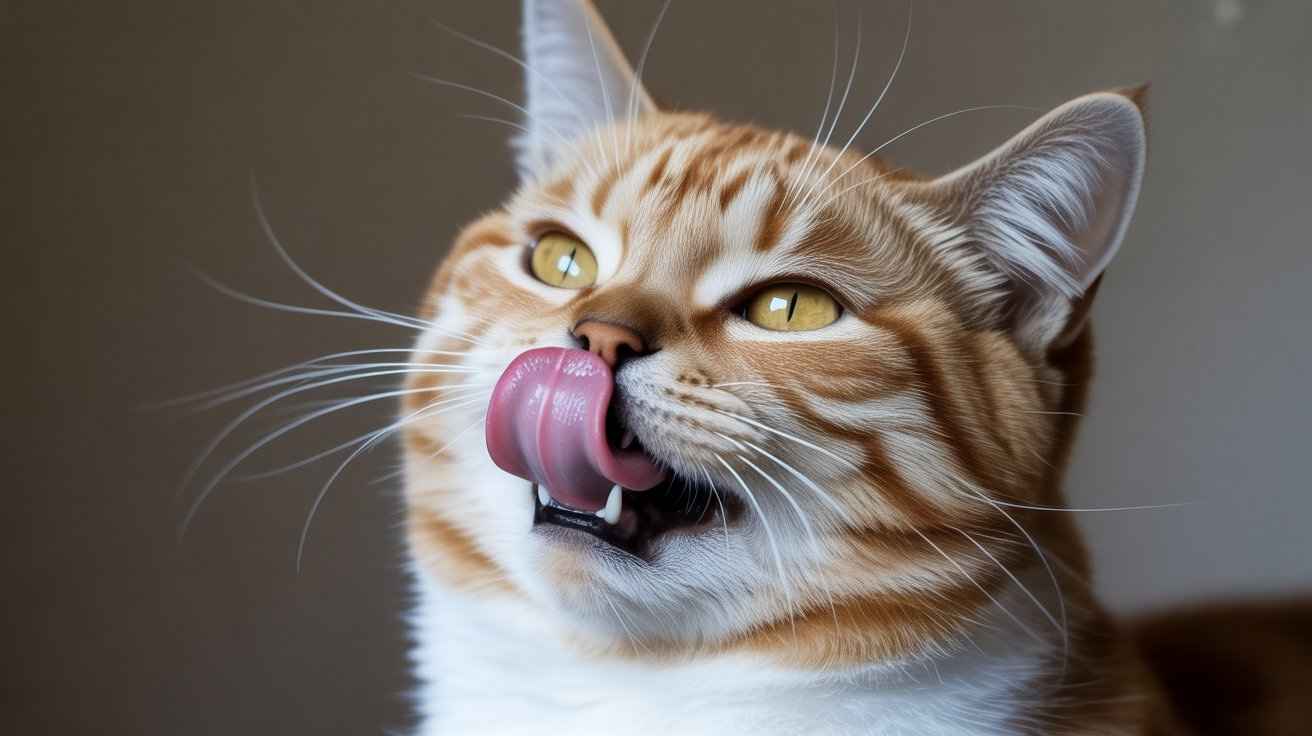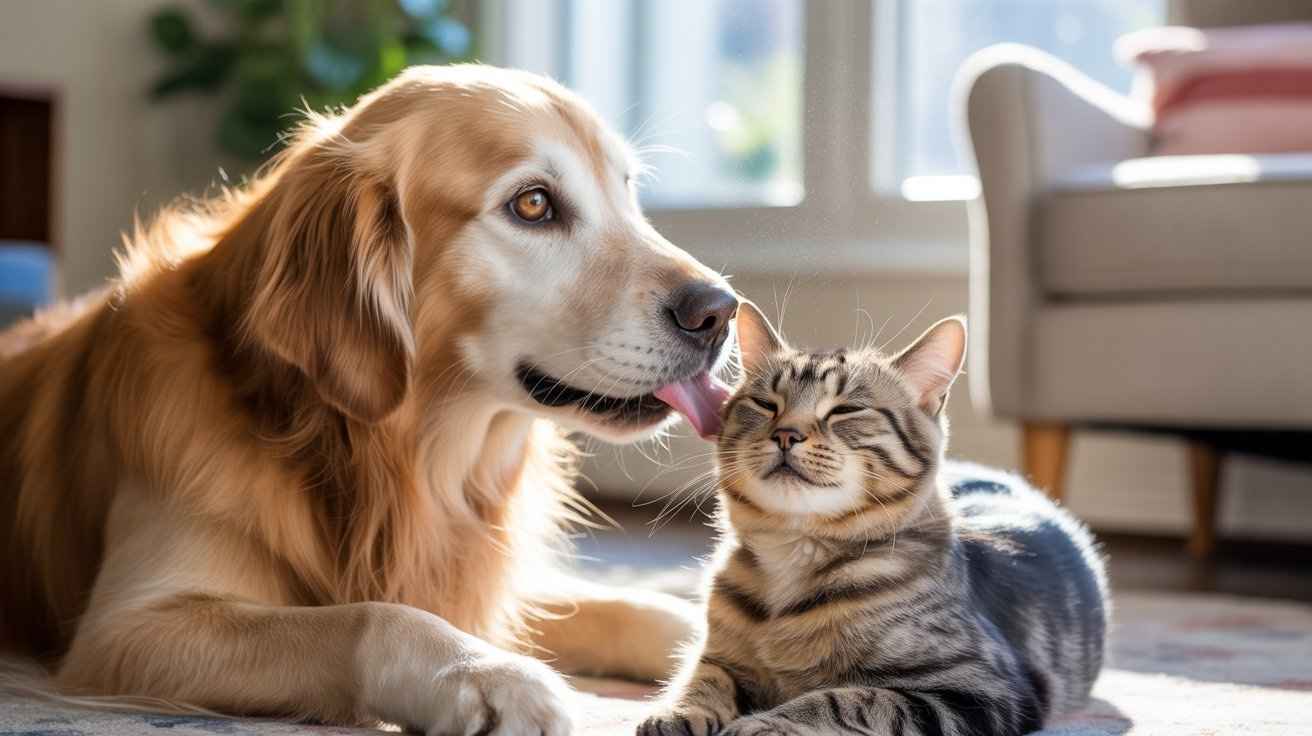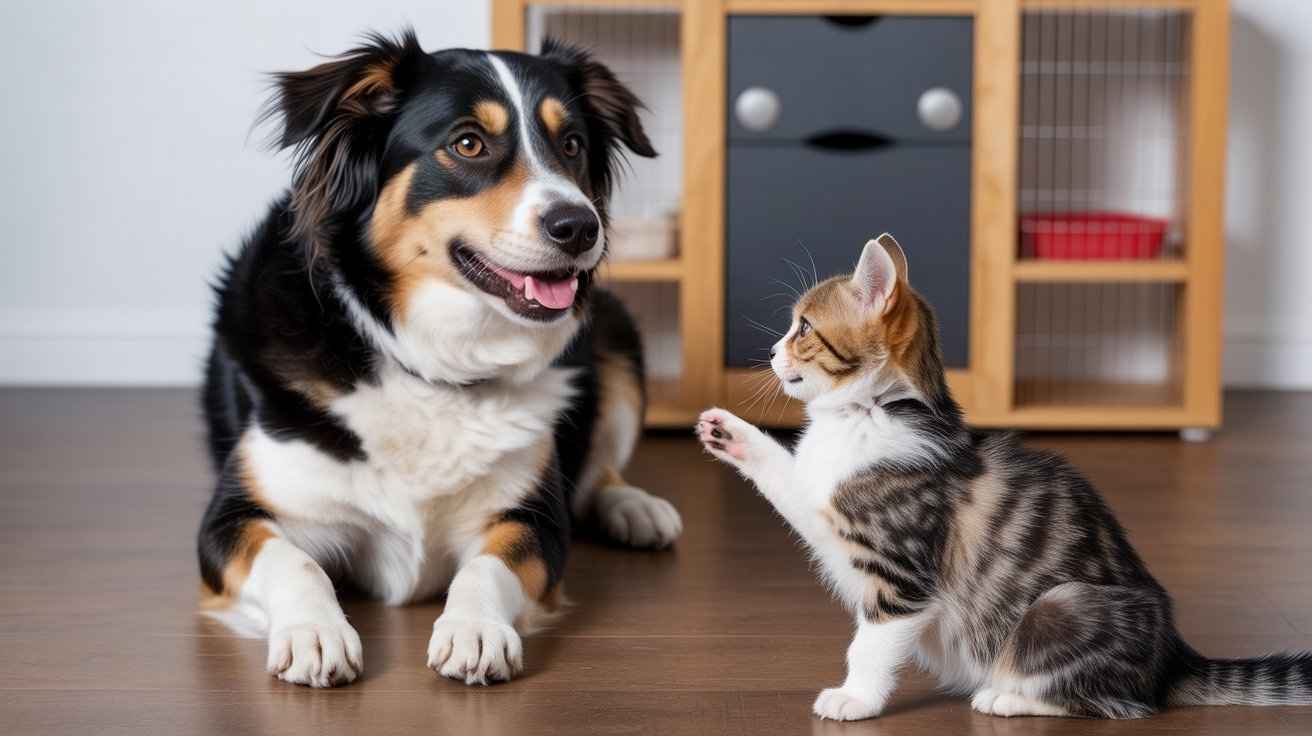Why Do Cats Have Rough Tongues but Not Dogs? 6 reasons include grooming, drinking, cleaning bones, hunting, cooling, and food grip.
Why Do Cats Have Rough Tongues but Not Dogs?
If you’ve ever felt a cat lick your hand, you know their tongue feels rough, almost like sandpaper. But a dog’s tongue feels soft and smooth.
So, why do cats have rough tongues but not dogs? The answer is hidden in the tiny, backward-facing spines called papillae that cover a cat’s tongue. These spines are made of keratin, the same rigid material as our fingernails.
Cats need these rough tongues for:
- Grooming
- Eating meat
- Drinking water
- Cooling their bodies
Dogs, however, evolved with smooth tongues because their cleaning and feeding habits are very different.
6 Main Reasons Cats Have Rough Tongues (and Dogs Do Not)
| Reason | Simple Explanation |
|---|---|
| Grooming | Cats use their tongues like a brush to clean fur. |
| Tiny Spines | Papillae act like hooks, making the tongue rough. |
| Eating Meat | Helps cats pull meat off bones. |
| Drinking Water | Tongue lifts drops of water into the mouth. |
| Cooling the Body | Saliva spread on fur helps cats stay cool. |
| Different from Dogs | Dogs have smooth tongues since they don’t need spines. |
Quick Facts: Cats vs Dogs’ Tongues
| Point | Cats | Dogs |
|---|---|---|
| Tongue Texture | Rough, sandpaper-like | Smooth |
| Special Feature | Papillae (tiny keratin hooks) | None |
| Main Use | Lap water with a smooth tongue | Licking & eating |
| Drinking Style | Tongue lifts water drops | Helps hunting, eating, and grooming |
| Cooling Method | Lick fur → saliva dries → cooling | Panting |
| Survival Role | Helps hunting, eating, grooming | Teeth do the main work |
What Makes a Cat’s Tongue Rough?
A cat’s tongue feels rough because it is covered with tiny spines (papillae). These spines are composed of hard keratin and point backward, resembling small hooks. That is why many people wonder, Why do cats have rough tongues but not dogs?
- Cats use their rough tongues to groom their fur, eat meat, and maintain their cleanliness.
- Dogs have smooth tongues because they live and eat differently.
Grooming Power: Why Cats Need a Rough Tongue
Cats spend a significant amount of time grooming every day. Their rough tongue works like a built-in brush.
- Papillae comb through the fur.
- They pull out loose hairs, dirt, and even tiny bugs.
- The tongue spreads saliva, keeping fur soft.
- When saliva dries, it helps cats regulate their body temperature.
This is one of the biggest reasons why cats have rough tongues but not dogs. Dogs lick themselves too, but their smooth tongues cannot clean deep into the fur like cats can.

Eating and Hunting: Ripping Meat with the Tongue
Cats are natural hunters. Their rough tongue helps them eat meat more effectively:
- The hooks on their tongue act like tools that pull meat from bones.
- This makes eating easier for cats in the wild.
- Dogs, on the other hand, use their teeth to chew and tear large chunks.
This is another reason why cats have rough tongues but not dogs.
Drinking and Cooling: Surprising Uses
Cats also use their tongue for drinking and cooling:

- When they drink, the tongue moves very fast, lifting drops of water.
- The spines help catch the water.
- While grooming, cats spread saliva over their fur.
- As saliva dries, it cools the body.
Dogs cool down by panting, but cats use their tongue in this clever way.
Why Dogs Don’t Have Rough Tongues
Dogs have smooth tongues, not rough ones.
- They don’t have papillae spines like cats.
- Dogs don’t need them because they don’t spend much time self-grooming.
- Their tongues are mainly for licking, while their teeth do the chewing.
Cats needed rough tongues to survive as hunters. Dogs evolved differently, which explains why cats have rough tongues but dogs do not.

Cat Tongue Health: When Roughness Means Trouble
A cat’s tongue is always rough, but problems can happen:
- Tongue looks red, swollen, or has sores
- Trouble eating or too much drooling
- Pain while licking
If you notice these signs, take your cat to a veterinarian. Knowing why cats have rough tongues but not dogs is useful, but it’s also essential to know when the roughness is not typical.
FAQs
Q1. Do all cats have rough tongues?
Yes. Every cat has a rough tongue because of tiny papillae.
Q2. Can a cat’s tongue hurt me?
No. It feels like sandpaper, but it will not cut your skin.
Q3. Why do dogs not have rough tongues?
Dogs have smooth tongues. They don’t need spines for grooming fur.
Q4. Do kittens also have rough tongues?
Yes. Even kittens have rough tongues, just smaller than those of adults.
Q5. Why is a cat’s tongue important?
It helps cats clean fur, eat meat, and cool down.
Q6. What if my cat’s tongue looks strange?
If your cat’s skin appears red, swollen, or sore, consult a veterinarian.

Hi, I’m Sana Sajid!I’m the voice behind CatsCare.blog, sharing my 10+ years of hands-on cat care experience. With a diploma in animal care, I offer practical tips, trusted advice, and easy-to-follow guides to help keep your cats healthy and happy.
When I’m not writing, I spend time with my own cats or exploring the latest developments in feline health. Follow CatsCare.blog for expert insights and real cat stories!




![A white and brown dog gently licks the ear of a sitting brown tabby cat in a close-up indoor shot. [Why Your Dog Grooms Your Cat?]](https://catscare.blog/wp-content/uploads/2025/09/Why-Your-Dog-Grooms-Your-Cat.jpg)
